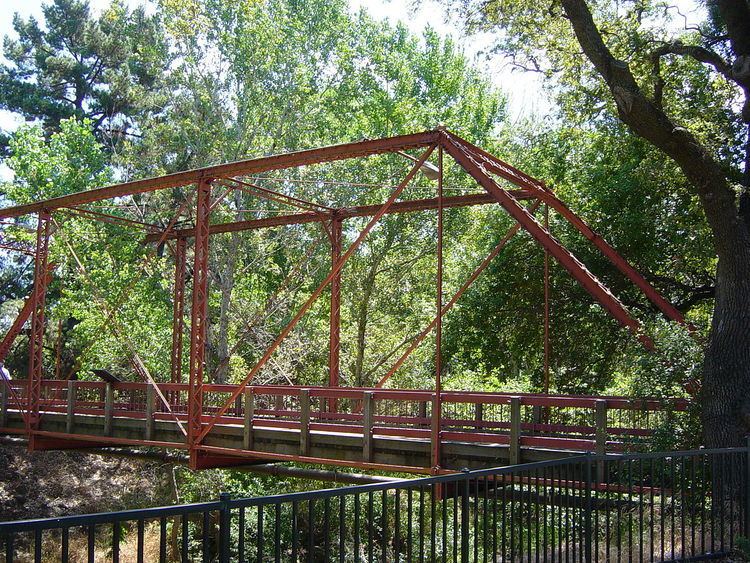 | ||
In structural engineering and construction, an eyebar is a straight bar, usually of metal, with a hole ("eye") at each end for fixing to other components. Eyebars are used in structures such as bridges, in settings in which only tension, and never compression, is applied.
Contents
Shape
A closed eyebar will typically have a rectangular cross section of constant thinness throughout its length and a constant width for all but the ends. The ends will transition to a wider part that is terminated by a rounded end. In the center of this end will be a hole which will receive a cylindrical pin, which may have provision to accept one or more nuts or bolts. If of round cross section the bar will typically be end-forged to create a head, which is then flatted by additional forging. The head may then be machined to a precise thickness and flatness. An alternative method for using round bar is to form a loop and to forge-weld (hammer weld) or electrically weld the free end to the main bar.
Open eyebars are not used in the cable anchorages of modern wire-cable suspension bridges. This does not allow the wires to be looped over the eye, rather than requiring threading through a closed eye.
In trusses
Eyebars are used in portions of pin-jointed trusses where it can be established by engineering procedures that the bar will not be imposed with any stress other than tension under all expected conditions.
In chain link suspension spans
Eyebar links have long been used in suspension bridges with a number of eyebar links combed together to form a highly redundant structure; however, more modern low-redundancy chain link suspension spans fell into general disfavor as a result of the collapse of the Silver Bridge in 1967, which led to the deaths of 46 people.
(The current method of suspension bridge design is to use multiple strands of drawn wire to form substantial cables.)
Fabrication
Eyebars may be cast, forged, or cut from rolled plate. If round stock is used the eyes will usually be forged.
Heat treating
Heat treatment (heating and rapid cooling) will result in a fine-grained microscopic crystal structure, enhancing the strength of the bar. Excessive hardness may induce brittleness, which should be avoided.
The pins used to join bars will also be heat treated, usually to a degree of hardness exceeding that of the bars so that they will not shear under high stress.
Assembly
The bars may be fabricated with pin holes that are slightly undersized. If so, these are then reamed in the field. This field reaming ensures that stresses will be uniformly distributed among the several bars forming the truss element or the chain link. Corrosion resistant treatment in the form of grease, white or red lead oil paste, or other water-excluding material may be added at the time of the assembly.
